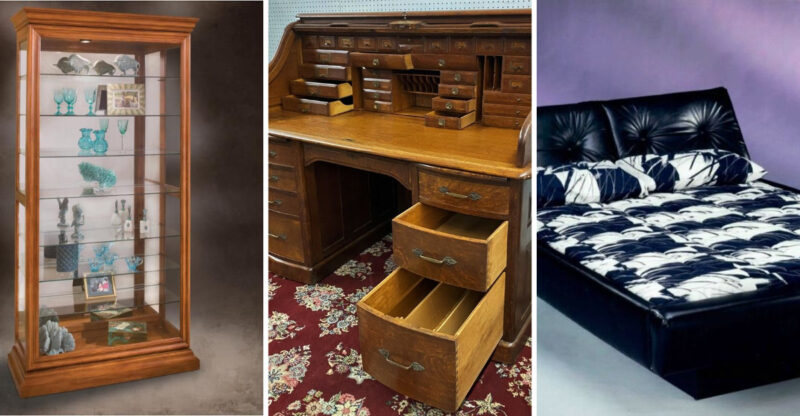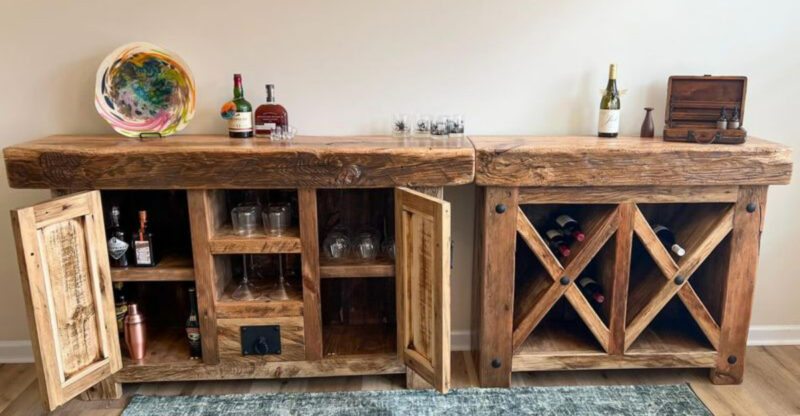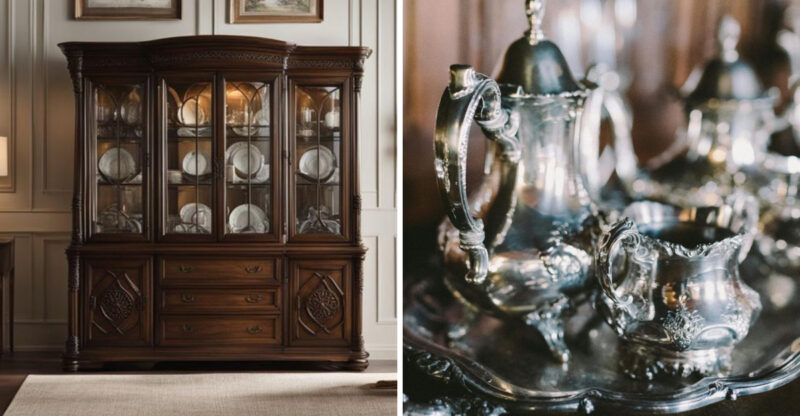7 Antiques Georgia Experts Say Are Worthless – And 7 They’d Never Touch
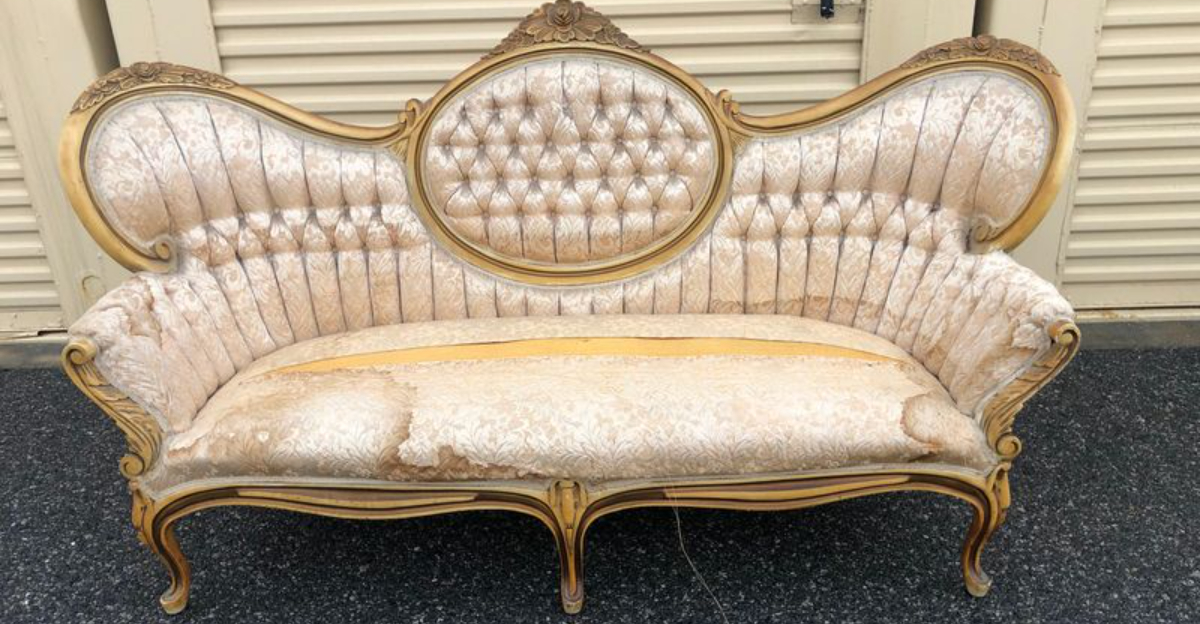
The real thrill of antiques isn’t just in the age or patina – it’s in discovering whether a piece is a secret jackpot or a total dud. In Iowa homes, heirlooms and flea market finds gather dust in corners, holding stories and, sometimes, surprising value.
But not every old object is a goldmine.
The antiques market is fickle, shaped by shifting tastes, celebrity auctions, and what’s trending on TV. Some items soar in value; others aren’t worth the space they’re taking up. Knowing the difference can mean cashing in – or holding onto clutter.
1. Antique Pressed-Back Chairs
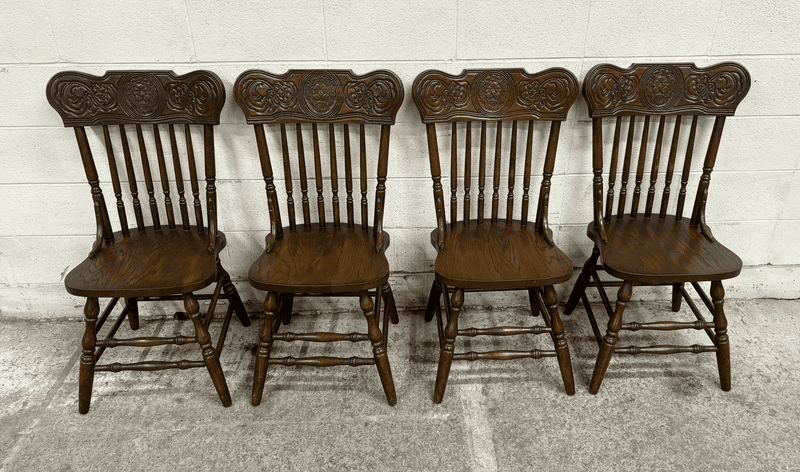
Once the pride of farmhouse kitchens, these ornate wooden seats have flooded the market.
Pressed-back chairs were mass-produced in the early 1900s, making them common finds at estate sales. While charming, they typically sell for $20-50 each – barely covering the cost of reupholstering the seat.
2. Mass-Produced Depression Glass
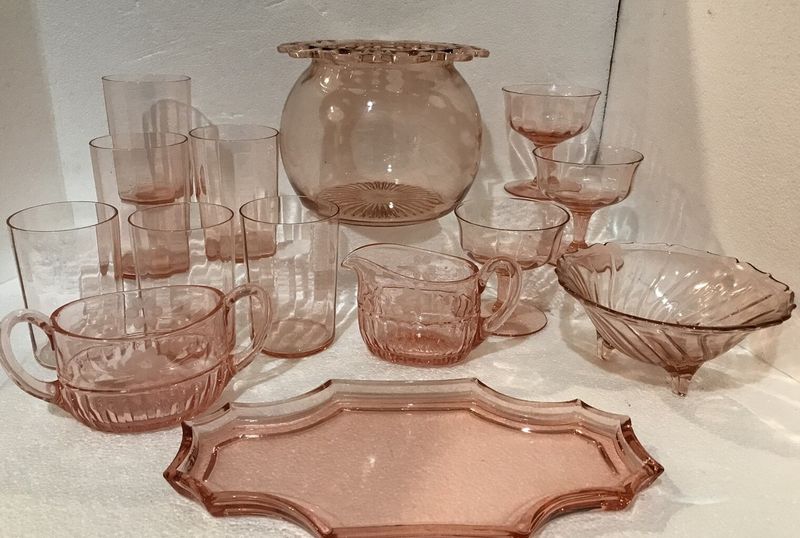
The pretty pink and green dishes grandmother cherished aren’t the goldmine you might expect. Depression glass flooded American homes as promotional giveaways during the 1930s.
Unless you’ve got rare patterns like Cameo or Parrot, most Depression glass pieces fetch under $10 each in today’s saturated market.
3. Mismatched Silver-Plated Flatware
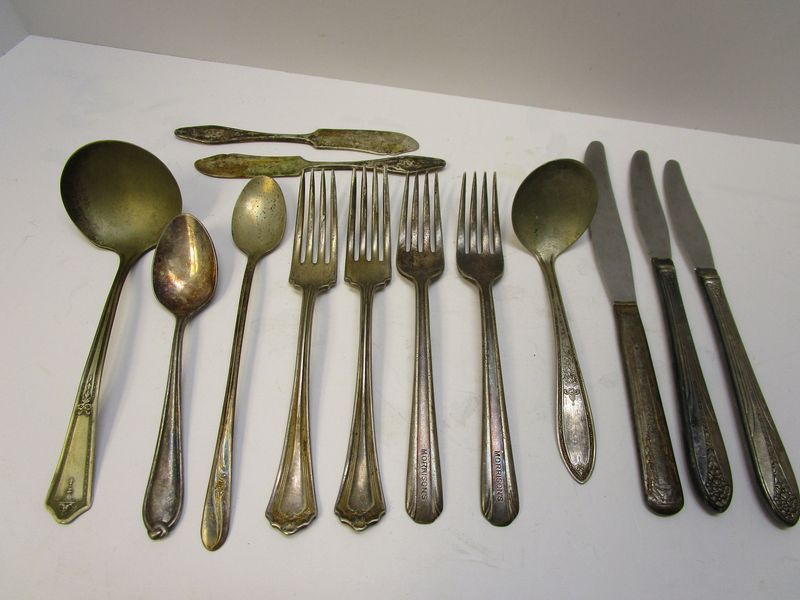
Grandma’s old silverware box might contain less treasure than you think. Unless you’ve got complete sets, silver-plated utensils carry minimal resale value.
The thin silver coating wears off easily, especially at stress points. Most Georgia dealers won’t offer more than scrap prices for these tarnished relics.
4. Vintage Sewing Machines
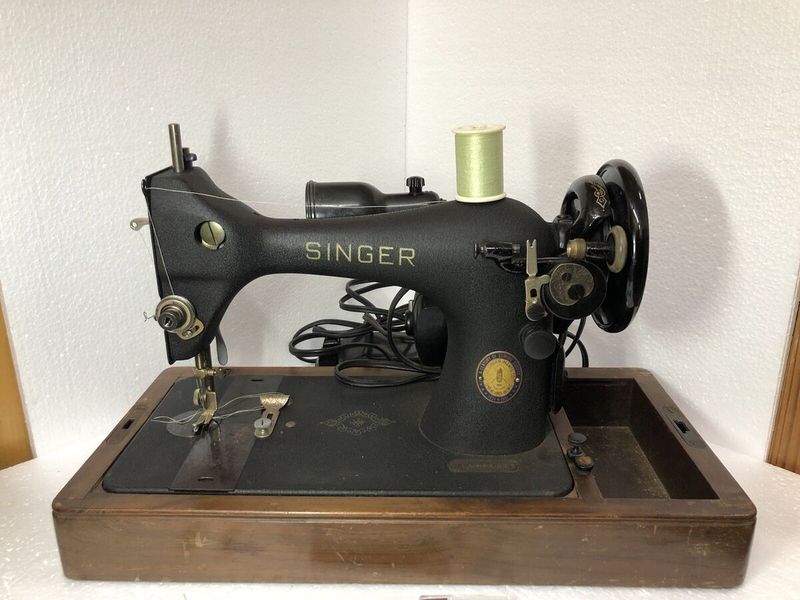
Heavy as anchors and twice as common, old Singers crowd thrift stores nationwide. Vintage sewing machines were built to last generations, which explains why so many survived.
Despite their sturdy construction, most models from the 1940s-70s sell for $25-75 in Georgia shops – hardly worth the backache of moving them.
5. Collector Plates From The 1970s-80s
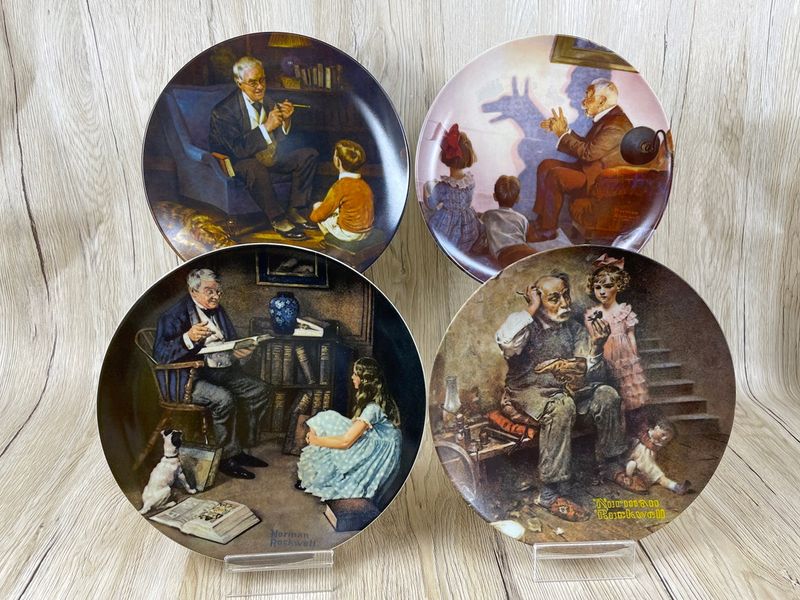
Remember those commemorative plates with scenes of puppies or Norman Rockwell paintings? Georgia dealers certainly do.
Collector plates were marketed as investments that would appreciate in value. Reality check: most sell for $5-10 today, regardless of whether they’re still in their original boxes with certificates of authenticity.
6. Curio Cabinets From The 1990s
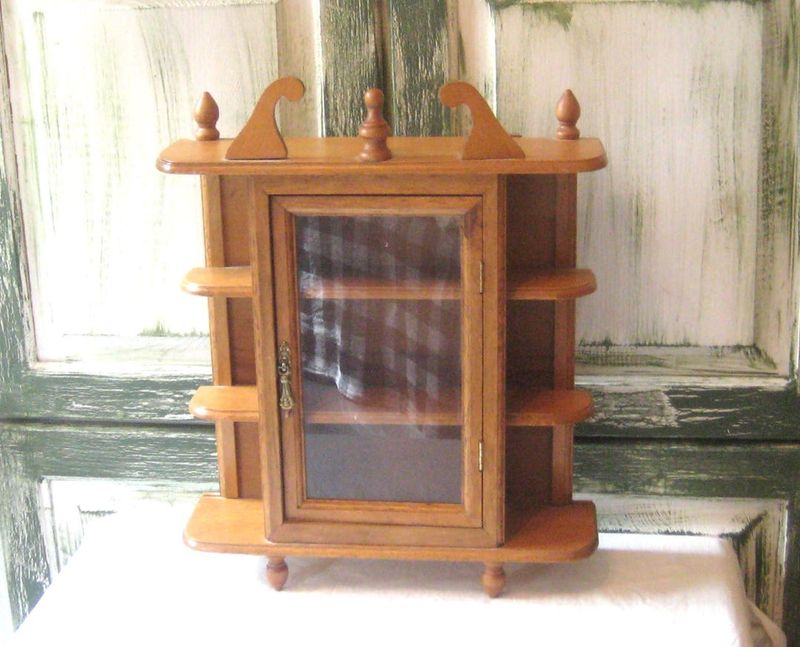
Those glass-fronted display cases once showcased prized collections in nearly every suburban home. Curio cabinets from department stores like JCPenney and Sears have virtually no resale value today.
Young homebuyers avoid these dated pieces, and Georgia dealers often refuse them altogether, knowing they’ll occupy floor space indefinitely.
7. Old Encyclopedia Sets

Leather-bound knowledge collections gather dust in basements across America. Encyclopedia sets were substantial investments for families before the internet existed.
Now, complete Britannica collections rarely fetch more than $30 in Georgia’s antique markets – less than a dollar per volume for information that’s largely outdated.
8. Restuffed Victorian Upholstery Pieces
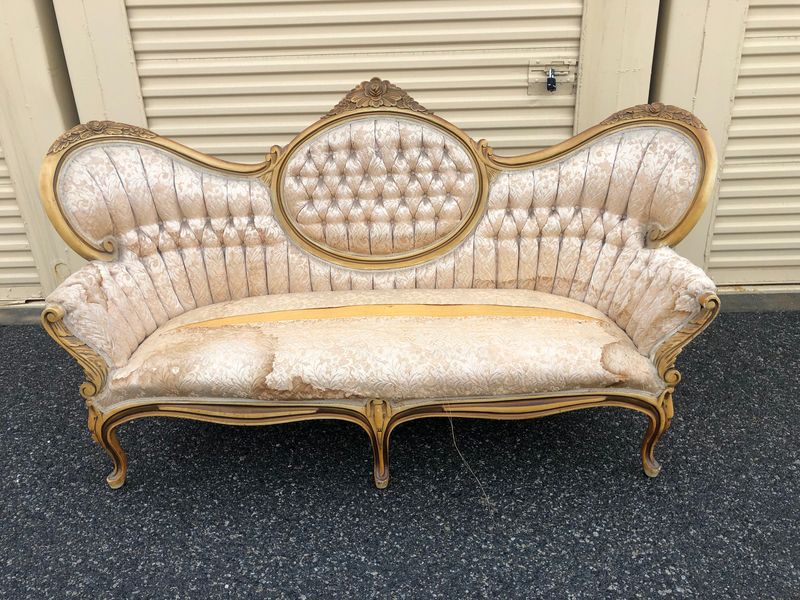
Beneath that new fabric lies a century-old secret that experts spot immediately. Victorian furniture that’s been completely reupholstered loses significant historical value.
Dealers avoid these pieces because they’ve lost their original horsehair stuffing and period-appropriate fabrics – critical elements that authenticate true Victorian craftsmanship.
9. Water-Damaged Wooden Furniture

Moisture marks tell a sad story that no amount of restoration can fully erase. Water damage creates permanent structural problems in antique wood pieces.
Georgia’s humid climate makes these issues worse over time. Experts won’t touch these compromised items, knowing the veneer will continue bubbling and warping regardless of repairs.
10. Heavily Refinished Antique Tables
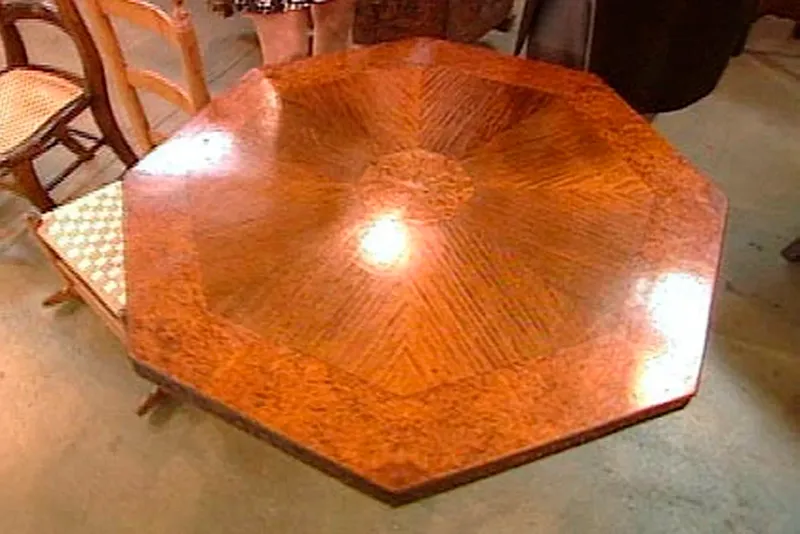
Stripping away decades of patina strips away value too. Over-zealous refinishing removes the authentic character that collectors prize in antique furniture.
Experts immediately recognize tables that have been sanded down to bare wood and given a modern polyurethane finish – and they walk right past them.
11. Fake Primitive Farm Tools
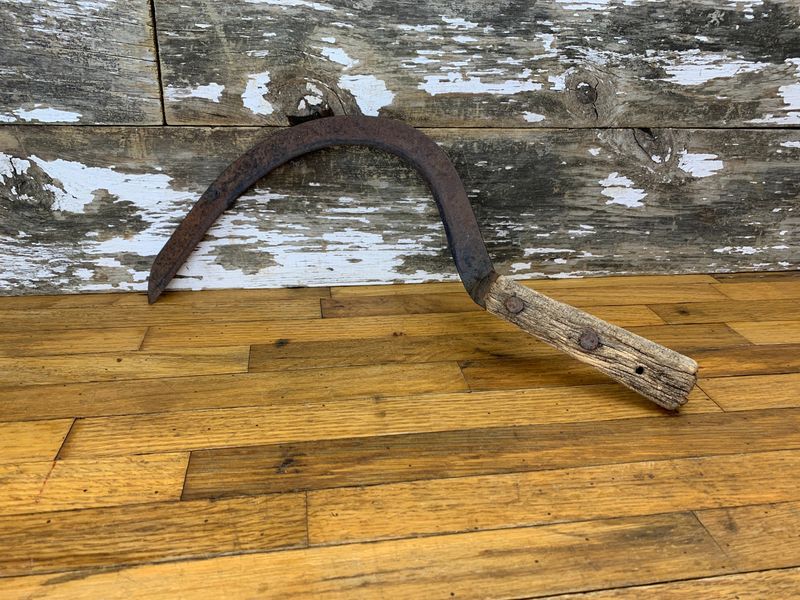
Rusty isn’t always authentic when it comes to old farm implements. Counterfeit primitive tools flood the market, artificially aged to fool buyers.
Georgia experts can spot these fakes by examining construction methods and wear patterns. Legitimate antique tools show consistent aging and authentic period manufacturing techniques that can’t be easily replicated.
12. Overly Restored Oil Paintings

Beneath that bright new layer of paint lies an artwork’s diminished value. Professional restoration should be nearly invisible, preserving the artist’s original work.
Art dealers avoid paintings with obvious overpainting or amateur repairs. These heavy-handed restorations can reduce a painting’s value by 80% or more.
13. Mass-Produced “Antique-Style” Signs
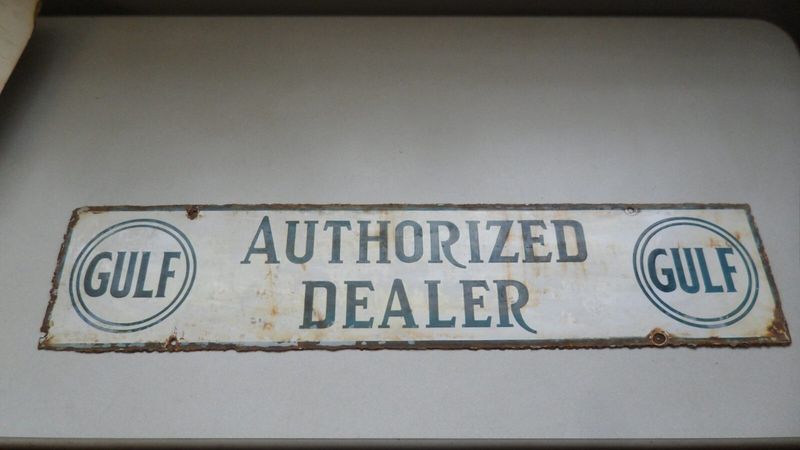
Artificially distressed doesn’t equal authentically old in the world of signage. Factory-made “vintage” metal signs with pre-rusted edges flood today’s market.
Experienced dealers can spot these reproductions instantly. Authentic vintage advertising signs show consistent aging, period-appropriate graphics, and manufacturing techniques that can’t be mass-replicated.
14. Cracked Marble-Top Furniture
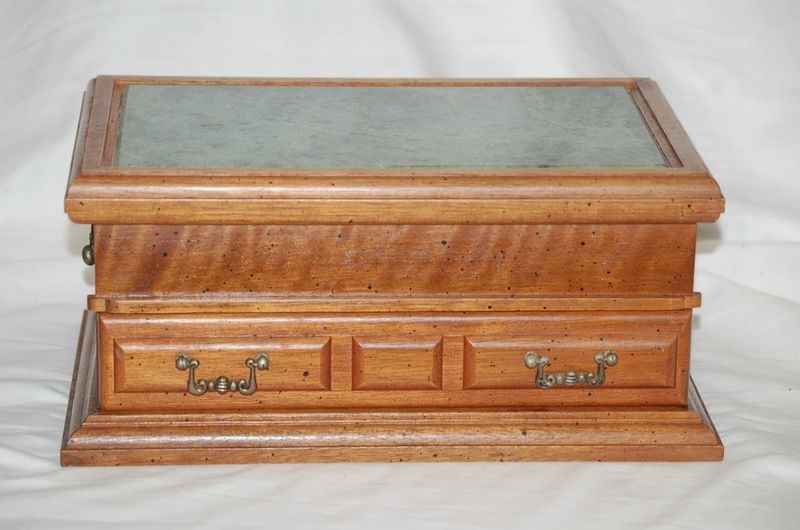
Even a hairline fracture spells disaster for these otherwise elegant pieces. Marble-topped tables and dressers with cracks have virtually no resale value.
Georgia dealers won’t touch damaged marble because repairs are rarely invisible and the cracks inevitably worsen. Even professional restoration can’t restore the structural integrity or value.




